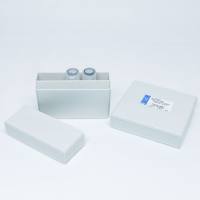The study of the neural substrates of reinforcement has been facilitated greatly by the diversity of behavioral indices of reinforcement accessible to investigators. Intracranial self-stimlation (ICSS), intravenous self-administration (SA), conditioned approach/avoidance, conditioned taste preference/aversion, and place conditioning (PC) paradigms are distinct tools for studying reinforcement, each with particular advantages that can be manipulated to optimally address questions of interest. In a simple version of the PC paradigm (Fig. 1 ), animals experience two distinct neutral environments paired spatially and temporally with distinct unconditioned stimuli (UCS). These animals are later given an opportunity to enter either environment, and the time spent in each environment is used as an index of the reinforcing value of each UCS. A reinforcer is operationally defined here as any event that “increases the probability of a response.” Animals spend more time in environments paired with appetitive reinforcers than in those paired with neutral stimuli; conversely, animals spend less time in environments paired with aversive reinforcers than in those paired with neutral stimuli. This choice to spend more or less time in an environment is assumed to be the animals’ expression of their appetitive or aversive experience within that environment; with a positive reinforcing UCS, the previously neutral environmental cues become secondary positive reinforcers, whereas with an aversive UCS, the paired environmental cues become secondary negative reinforcers.
Fig. 1.
Simple version of the place conditioning paradigm. Animals experience two distinct neutral environments (here “black” and “white” shaded) paired spatially and temporally with distinct unconditioned stimuli (here “drug” on days 2, 4, and 6, and “saline” on days 3, 5, and 7). Later (day 8), animals are given an opportunity to enter either environment, and the time spent in each environment is used as an index of the reinforcing value of each UCS. These time values are often compared to a “baseline” preference for each environment (here, measured day 1)






